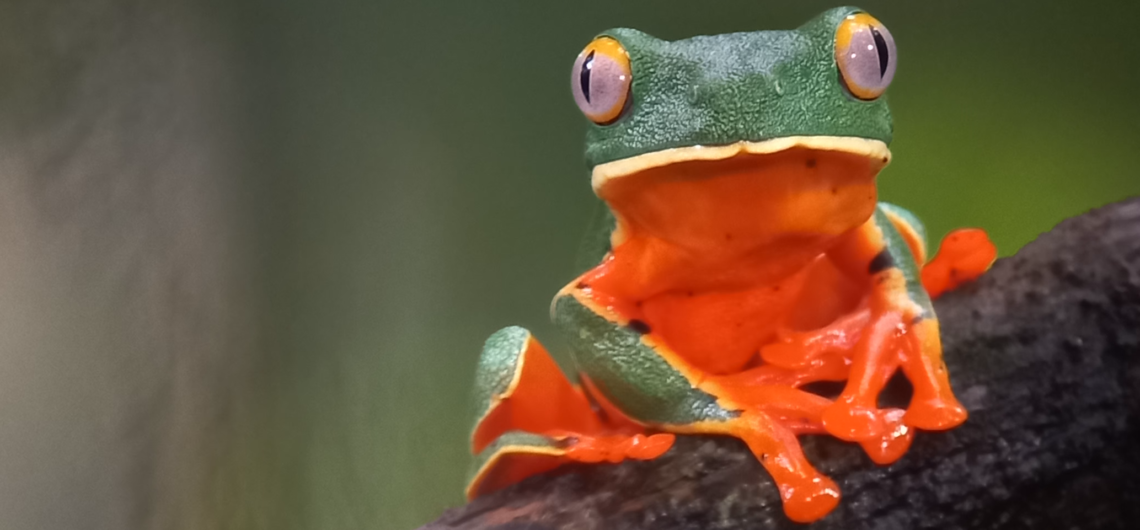Sylvia’s Tree Frog
Cruziohyla sylviae
Photo by Eliécer Rodríguez
Probably the most interesting feature about this species is that adults assemble en masse to reproduce, where females lay their eggs on leaves overhanging small ponds or water-filled tree holes and several males compete to fertilize those eggs. Males also use leg-waving behavior to communicate visually during territorial displays.
The species was described in 2018 by zoologist Andrew Gray, and is named after his 3-year-old granddaughter Sylvia. It can be distinguished from similar species by its moderately large size, a large tympanum and its extensively webbed fingers and toes. Also, the dorsal surface of C. sylviae combines two shades of green, and small, pale green, lichen-like speckles. Females are slightly bigger than males.
Sylvia’s Tree Frogs live and reproduce exclusively in primary forests and occur at low- to mid-elevation localities from Honduras to Panama. This is an under-studied species, probably due to being nocturnal and because it used to be mistaken as a similar species, the Splendid Tree Frog (C. calcarifer).
References:
www.amphibiaweb.com

